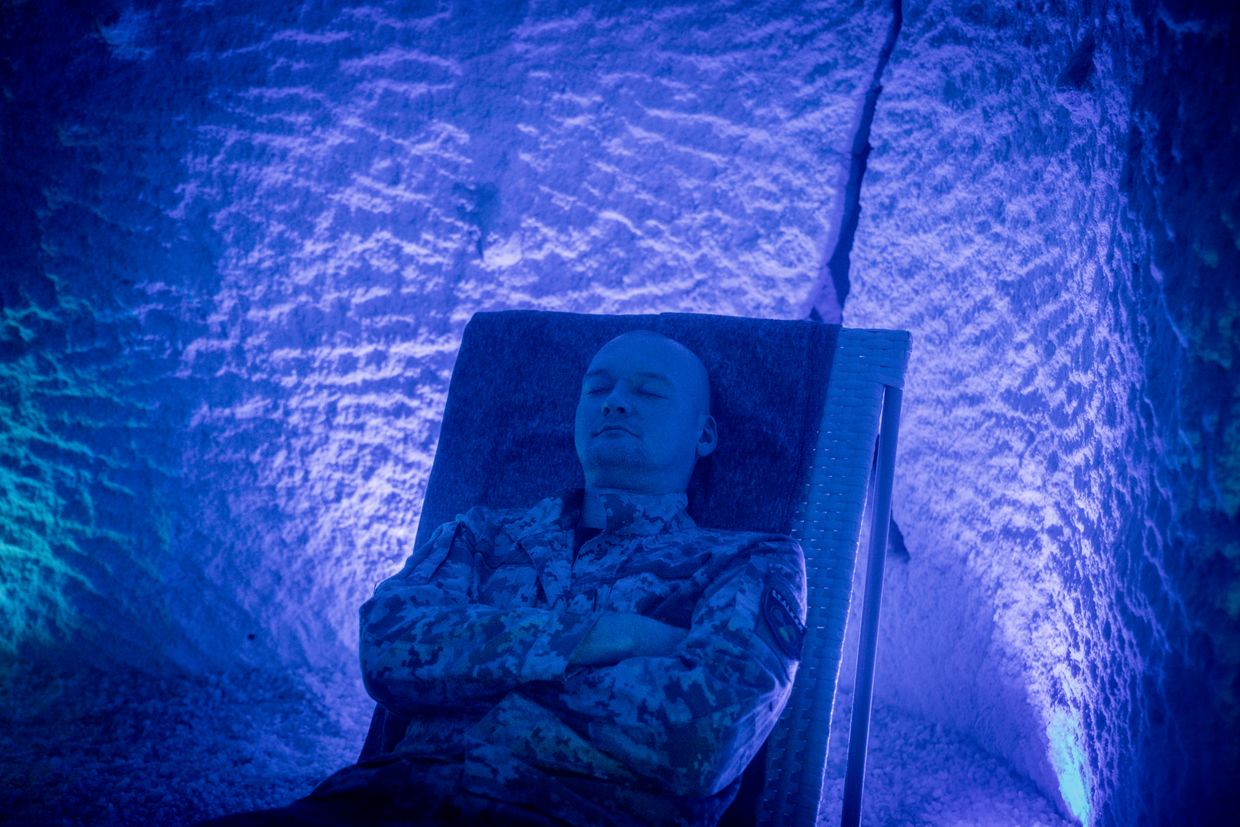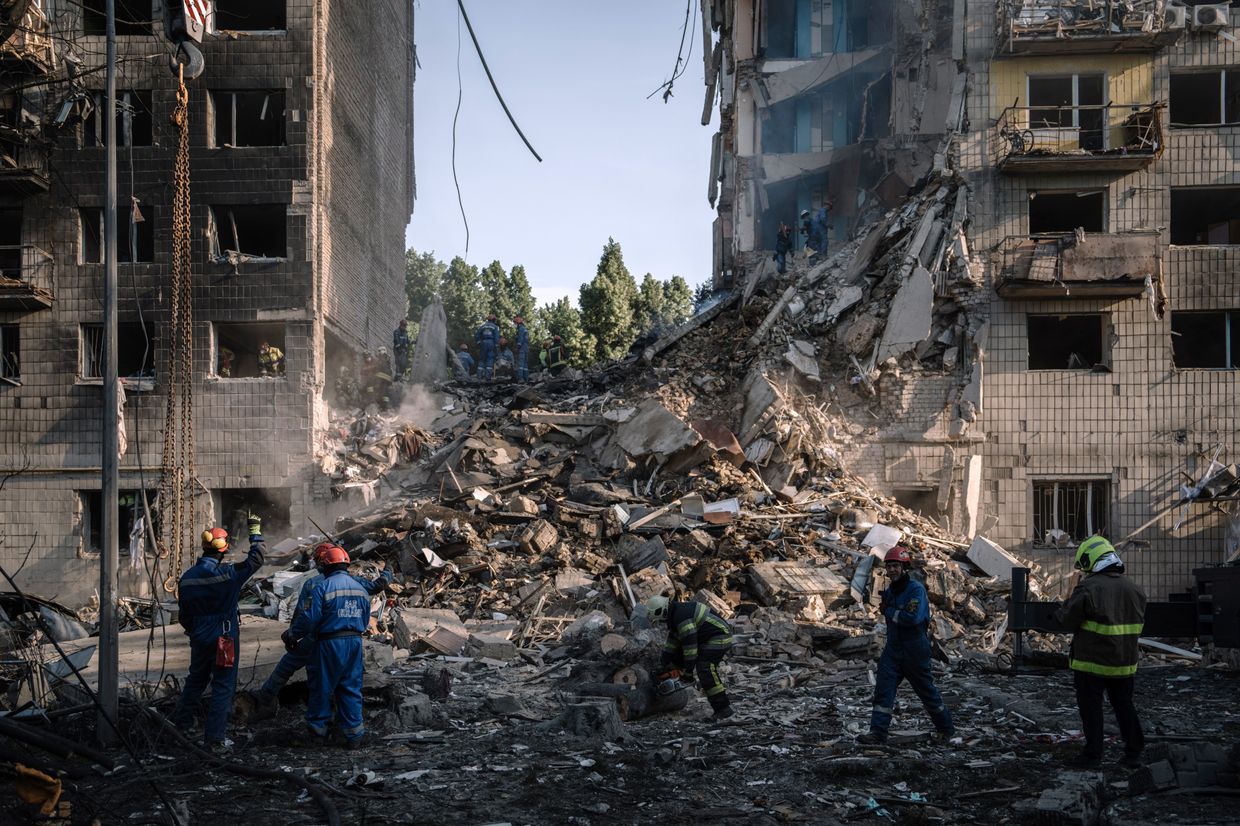Editor’s Note: This article was published by the twice-weekly newsletter “The Counteroffensive with Tim Mak” on Oct. 17, 2024, and has been re-published by the Kyiv Independent with permission. To subscribe to The Counteroffensive, click here.

Last year, Mykola Horishnyi was declared clinically dead – twice. The Ukrainian soldier suffered severe blood loss from an explosion, likely a Russian mine.
“Tomorrow will mark exactly one year since I was wounded – at 4:45 p.m. I still can't fully grasp that this all happened to me and that I am no longer in the trenches,” Mykola told The Counteroffensive.
Mykola suffers from PTSD, making it difficult for him to discuss the traumatic events he endured. He recently began psychotherapy at a rehabilitation center in the Kyiv suburb of Borodianka, which is pioneering unique virtual reality therapy.
Ukraine's Health Ministry reported in August that the number of people struggling with mental health issues has doubled since 2023. Market research data shows that sales of antidepressants have grown by more than 50% compared to the pre-war year of 2021, according to the BBC.
Typically, around 15% of people develop PTSD after experiencing traumatic events of violent conflict or war. Most can overcome its effects with the right professional help, though traditional therapy doesn't always succeed.
The increase in mental health problems suggests a major social crisis after the war, as hundreds of thousands of soldiers try to reintegrate into peacetime civilian life. To address these challenges, technological innovators are experimenting with new forms of virtual reality (VR) therapy.
“If it wasn't for our doctors, we wouldn't be talking now,” Mykola said.

For Mykola, it all began when he volunteered to join the army in February 2023.
“I wanted to be deployed to the front lines in the east, to get to Crimea, take our Crimea back, and that’s it. But of course, it didn't work out as expected," he said.
A year has passed since Mykola was injured, but he is still haunted by the memories.
“I still can’t fully comprehend that this is my reality now, that I’m no longer in the trenches, running around, storming positions. When I close my eyes or sit alone, I feel like I’m still there. I see the trenches in my sleep – these nightmares never leave me,” Mykola said.
Currently, Mykola is receiving therapy and retreat services at the Borodianka Center for Social and Psychological Rehabilitation. The center is one of the few places in Ukraine actively developing VR therapy.
Exposure therapy using VR has shown promising therapeutic qualities.
“It’s hard to think of many mental health conditions that it couldn’t benefit. We are working on treatments for a large number of conditions,” Daniel Freeman, a professor at the University of Oxford, told the BBC.

A specialist is always present to provide support, but the main goal is to recreate traumatic memories to help the patient overcome stress and fear.
“Our brains are built in a way that they don’t really tell the difference between virtual and physical reality. Virtual reality helps bring a person back to normal memories and feelings by immersing them in a virtual environment,” said Yevhen Kotukh, a Ukrainian VR specialist who is actively developing this technology.
Yevhen and his team are working on creating a new technology for the rapid diagnosis of PTSD.
They plan to use virtual reality to evoke emotional responses in veterans by showing a two-minute simulation of combat operations. Signals from the brain can then help determine whether the person has PTSD.
Currently, the VR technology at the center is in the early stages of development, but the team is actively collaborating with donors and partners to improve it.
It is expected that standard treatment will require up to ten sessions of 50 minutes each, taking place weekly. When the course is finished, a person's sensitivity to stress should decrease to a manageable level. Ultimately, VR therapy can help more than two-thirds of people with PTSD when used alongside a psychologist.
Traditional exposure therapy –where the therapist creates a safe environment and exposes the patient to their fears – may not be suitable for everyone and has its limitations.

First, it takes time to engage the soldier and begin addressing traumatic events. Second, the veteran’s memory and imagination might not be sufficient to process the trauma. Additionally, it can be hard for individuals to open up and speak freely about painful memories.
Currently, active cooperation with foreign partners is underway to create a specialized room with sensors that allow for free movement, enhancing the realism of the VR experience.
In addition to psychological assistance, VR helps with phantom pain for those who have lost limbs but can still feel pain in the amputated areas. Mykyta Makazan, a veteran who had his leg amputated, faced this problem. He shared that sometimes the pain was so intense it made it difficult to get out of bed.
With sensors attached to the muscles of his lost limb and virtual reality games designed to develop motor skills, he can rewire his brain to believe that the limb he moves in the game is his own. This approach helps him move the muscles and stretch them, alleviating the phantom pain. The goal of virtual reality therapy is to relieve the pain experienced in reality.
As Mykola discussed the nightmares that still haunt him, his smile faded. To shift the conversation, I asked about things that distract him, and he smiled.
“Family. Home, routine, communication – when my wife comes home from work and we talk, when we go for a walk, this center in Borodianka,” Mykola said.
All veterans should experience such support and assistance on their difficult paths toward physical and psychological rehabilitation.
Editor’s Note: The opinions expressed in the op-ed section are those of the authors and do not purport to reflect the views of the Kyiv Independent.
Introducing official
merch from the Kyiv Independent













